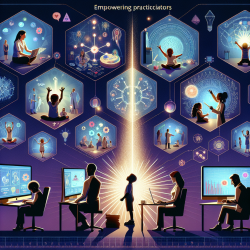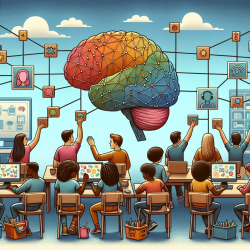In the realm of autism spectrum disorder (ASD) detection, a recent study titled "Detecting autism from picture book narratives using deep neural utterance embeddings" has shown promising results that could transform the diagnostic process. Conducted by Aleksander Wawer and Izabela Chojnicka, this research delves into the potential of deep neural networks in identifying ASD from textual utterances, specifically narratives produced during the Autism Diagnostic Observation Schedule, Second Edition (ADOS-2) picture book task.
Key Findings of the Study
The study explored two advanced text encoders—Embeddings from Language Models (ELMo) and Universal Sentence Encoder (USE)—along with several classification algorithms. These models were tested on narratives from 25 participants with ASD and 25 with typical development (TD). The outcomes were compared against standardized tests and evaluations by experienced psychiatrists.
Here are some critical findings:
- Higher Accuracy: The computer-based models demonstrated higher sensitivity, specificity, positive predictive values, and negative predictive values than the human raters.
- Effective Text Encoders: Both ELMo and USE provided promising results, indicating their effectiveness in representing utterances for ASD detection.
- Page-Level Embeddings: Using page-level embeddings for utterance representation yielded better results than a single vector approach, highlighting the importance of detailed text representation.
Practical Applications for Practitioners
For practitioners in special education and online therapy, incorporating these findings into your practice can significantly enhance your diagnostic toolkit. Here’s how:
- Enhanced Screening: Implementing deep neural network-based models can augment traditional screening methods, providing a more comprehensive assessment of narrative abilities in individuals with ASD.
- Objective Evaluation: These models offer objective, quantitative assessments, reducing the subjectivity inherent in human evaluations.
- Time Efficiency: Automated methods can save time and resources, allowing practitioners to focus on intervention and support strategies.
Encouraging Further Research
While the study presents groundbreaking results, it also opens avenues for further research. Future studies could explore:
- Larger Sample Sizes: Expanding the sample size to include diverse age groups, sexes, and IQ levels could provide more generalizable results.
- Different Narrative Contexts: Investigating various types of narrative stimuli, such as personal experiences or conversations, could enhance the model’s applicability.
- Integration with Other Data: Combining textual analysis with speech functions and extra-linguistic variables could further improve the accuracy of ASD detection models.
To read the original research paper, please follow this link: Detecting autism from picture book narratives using deep neural utterance embeddings.










